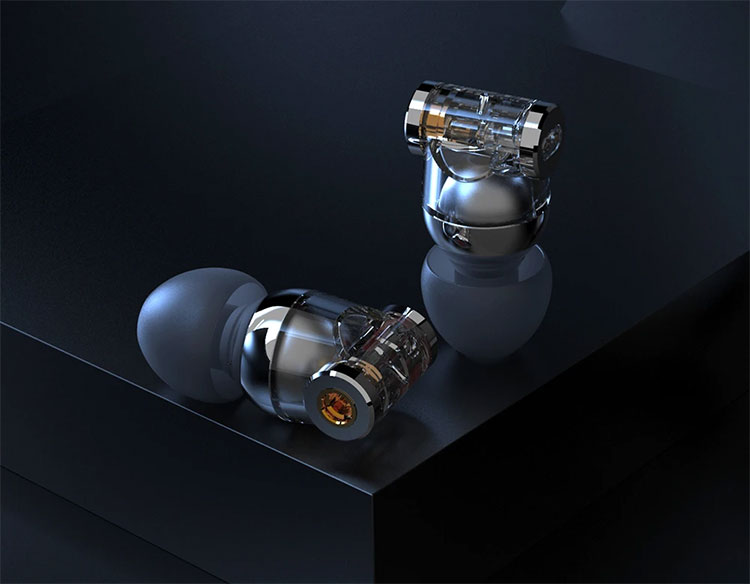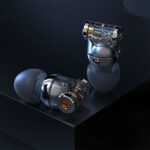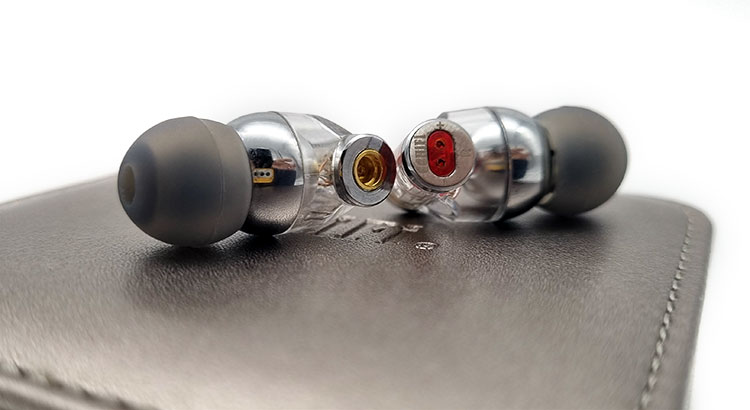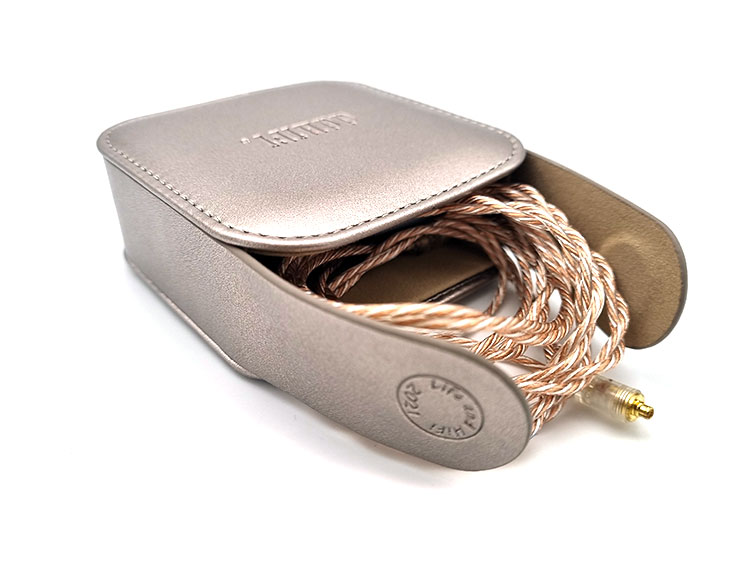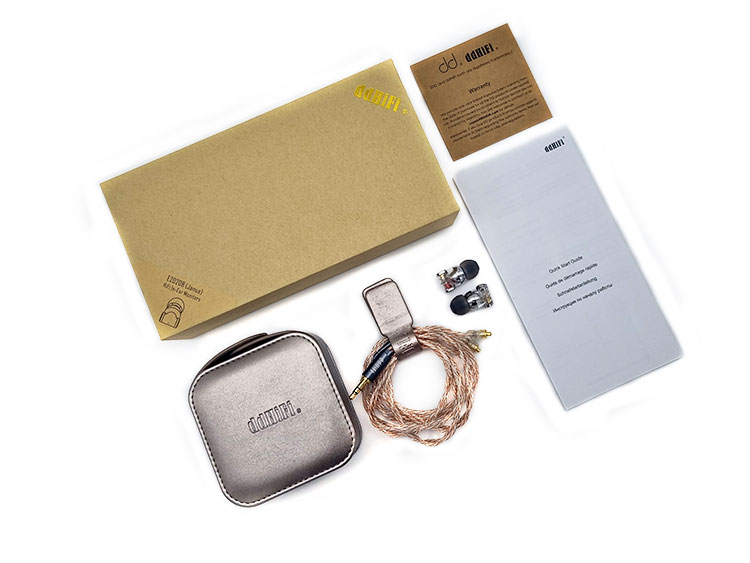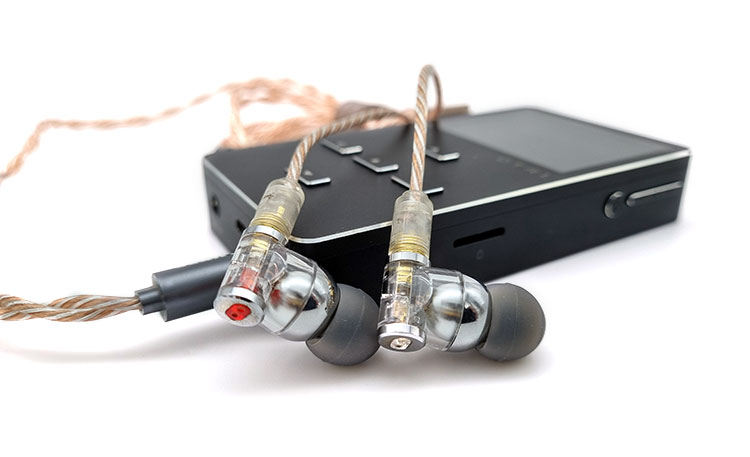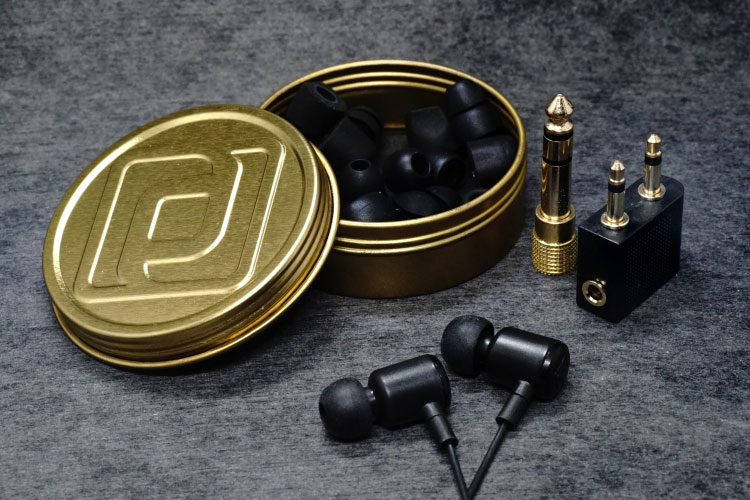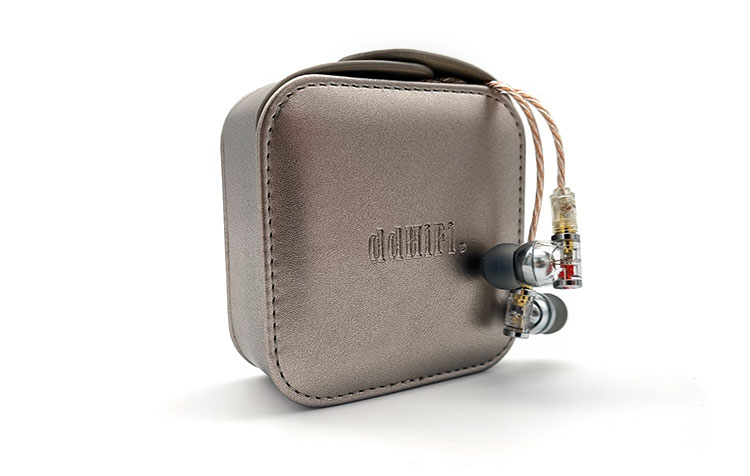ddHiFi Janus2 is a unique 10mm dynamic driver IEM allowing you to connect either MMCX or 2-pin 0.78mm cables. It is priced at $199.99.
Disclaimer: The ddHiFi Janus2 was sent to us in exchange for our honest opinion in this review. Many thanks to ddHiFi for giving us this opportunity.
You can read about previous ddHiFi products reviewed on Headfonics here.
Note, this 2-page review follows our new scoring guidelines for 2021 which you can read up on here.
ddHiFi has been making the rounds across global audiophile circles for its accessory offerings at reasonable price points such as the TC35 Pro. With ddHiFi’s expansive selection of product offerings; there’s almost something for everyone.
The best part? The infant brand is dishing out the value in spades without the exorbitant price tag. Having once worked with the established likes of FiiO and OPPO, Desmond Ding made the watershed decision to start his own lifestyle brand of portable audio-related accessories.
However, it appears that ddHiFi is pivoting away from the accessories space, cutting its teeth in the IEM market with the spiritual successor to the Janus, the Janus2.
The Janus was a revolutionary IEM that offered dual-termination types that accommodated both MMCX and two-pin connections, an industry first. While ddHiFi certainly doesn’t make significant modifications to its original formula, some noteworthy changes (or improvements, I’ll be the judge of that) have been made.
Do note, there are two versions of the Janus2; the standard edition which we have here for review, and a SE Youth Edition for $149.99 with an entry-level cable and fabric case.

Tech Highlights
The Janus2 is an evolution of its forbear. Featuring a 10mm dynamic transducer, ddHiFi asserts that this newly developed transducer display faster transients, which reduces unwanted distortion and audible artifacts.
Moreover, the complementary double-layered cavity exerts adequate control over the back waves emanating from its transducers. The 316L Stainless Steel dome funnels the back waves into the outer cavity, allowing them to dissipate without distorting the entire mix.
Lastly, the internal wiring connected to the transducer was customized, and manufactured by Effect Audio for optimal synergy, using pure-silver cables for the positive pole, and pure OCC for the grounding.
Its novel dual-socket feature is still present and accounted for, giving the Janus2 its unique silhouette. Theoretically, all these changes should result in some tangible, and audible differences, (hopefully, improvements).
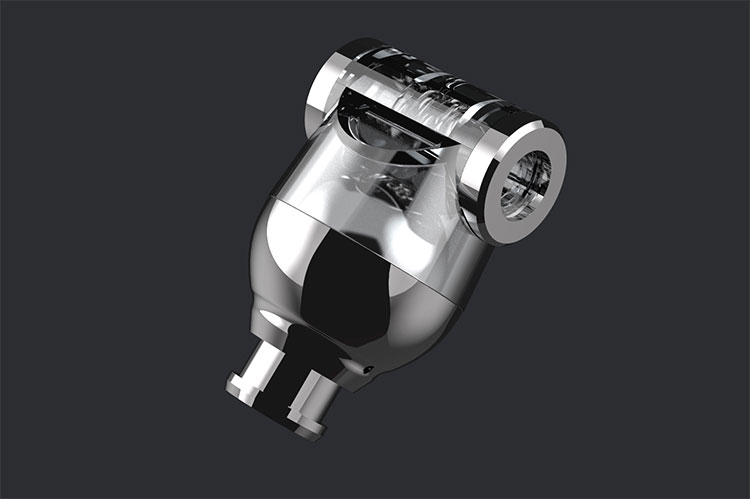
Design
Aesthetics
Visually, the Janus2 shares the same DNA as its sibling. It features a cable-down configuration, and a cylindrical-style chamber made from a mix of 316L Stainless Steel and Polycarbonate.
The nozzle and the front half of each chamber are made of metal, while the back-end cavity is made of plastic. The 2-pin connectors/MMCX connectors are placed at the top, and bottom of the shell’s backend.
Visually, there’s nothing much to complain about. It’s visually striking, and it is a refreshing break from the traditional acrylic mold that has become ubiquitous across the IEM marketplace. While change isn’t always good, the Janus2 breathes much-needed life into the chi-fi space with its bold design.
Form Factor
Size-wise, the Janus2 isn’t a large IEM by any means. A single 10mm transducer doesn’t take up much real estate, and the Janus2 is a 1-for-1 replica vis-à-vis the Janus 1 in terms of its dimensions.
The nozzle length is adequate, where the spout sits snugly in the ears when paired with the included medium-sized tips. The beauty of its bullet-shaped profile is how it allows for both over-ear and straight-down configurations.
For less hassle, wear it straight down. If cable noise proves to be a problem, wear it straight down. Ingenious design by the team at ddHiFi. L and R indicators are located close to the 2-pin receiving ends.
Comfort & Isolation
Comfort-wise, the Janus2 fits snugly in my ears. When worn cable-down, the weight of the cable doesn’t add unnecessary strain, nor does it displace its shells.
Isolation is impressive for a dynamic-driver IEM with a pinhole sized-vent at the back of the rear cavity. Wind noise is still a problem on occasion, especially in noisier surroundings with high levels of ambient noise.
Cable noise is a negligible issue. One would expect a cable-down configuration to be untenable on one’s daily commute, but I rarely experienced it, even when the cables were rubbing against my shirt. Impressive marks, all around.
Tips
The Janus2 comes packaged with two types of silicon tips to alter the final FR; treble, and bass. In this review, both the medium-sized treble and bass tips were used to identify any subtle changes in the final output.
As marketed, both tips do just that; they lightly buttress both the treble and bass response respectively. However, such audible changes do not alter the Janus’2 core FR significantly. The bass tips simply truncate the ddHiFi’s treble-response, while the treble tip reinforces it.
Stock Cable
In the previous iteration of the Janus, the stock cables included were ddHiFi’s very own “Forest” cables, made with 80 Kevlar-reinforced OCC copper strands in a dual-braid configuration.
Well, the Janus2 is a marked deviation from the Forest. Instead, it has opted for the inclusion of high-purity silver-plated OFC cables (BC110A) with 4-braids. Visually, the differences are night and day apart from the same MMCX-termination (one is minty-green, the other more traditional aesthetically).
Thankfully, both cables are just as flexible. The cable-sheathing on the BC110A is incredibly supple, flexible, and offers adequate grip. While it does retain more memory than most cables, it allows it to retain its shape when coiled neatly. Most importantly, the MMCX connector doesn’t spin around loosely; it remains snug, making it difficult to dislodge on purpose.
Packaging & Accessories
If you’ve unboxed any of ddHiFi’s past packages, you’ve seen them all. However, that’s not a bad thing at all! Their low-brow, minimal cardboard packaging distinguishes them from its competitors.
The Janus2 is no exception, with the package’s contents encased in a long-yet-slim cardboard box. Slide out the outer sleeve, and you’ll be greeted by the following accessories:
- a plush, rose-gold IEM case with magnetic flap (C80A)
- a magnetic clip (C10A)
- the Janus2 shells themselves
- MMCX dust-hole covers to prevent debris from entering
- the BC110A cables
- 3 pairs of bass-tuned silicon tips, and 3 more treble-tuned ones (S, M, L)
What is especially commendable about this comprehensive package is the fact that each accessory is sold separately, and the Janus2 is showcasing ddHiFi’s extensive portfolio of audio-related products through the Janus2.
Sound Impressions
Summary
The Janus2 has an unashamedly, forward upper-midrange and a bright treble region. To keep listeners on their toes, the Janus2’s bottom-end is mid-bass forward, with a modest sub-bass rumble that’s more reminiscent of balanced armatures.
If I had to make a surface-level comparison, the Janus2 carries many similarities with Dita’s house-tuning; fast, assertive, and mid-forward. The Janus2 provides an exciting signature that may present itself as unforgiving on poorly mastered tracks or low-fidelity genres with a lackluster low-end.
Timbre
The Janus2’s timbre is a double-edged sword. On the one hand, it’s a deeply engaging, and highly energetic sound that accentuates the grainier tonalities found in brass, string, and horn sections in complex orchestrations. Minute and subtle details are picked up on the Janus2 that are often lost in IEMs that favor a warmer tuning.
By removing the “lower-mid” veil that permeates most dynamic driver IEMs, the final product sounds livelier and engaging. Odd harmonics are heavily pronounced in the final product. It’s a daring tuning that deviates from the “warm” norm that one has come to expect in the chi-fi arena.
On the other hand, each shrill note appears more prominent because of its “laissez-faire” tuning. Older recordings with cabin-like warmth sound much thinner; the lack of a slow-sustain takes away from the magic that makes these recordings special.
The enervating treble starts to gnaw away during prolonged listening sessions. Songs littered with many “s” notes are especially strident; slight roll-off is needed here to blunt off any sudden treble peaks. This is a subjective critique that is strongly contingent on the genres of music that one listens to, and how long one plans to use the Janus2 per session.
Staging & Dynamics
The Janus2’s sound-stage is an intimate one; lateral L-R width is more closeted in its presentation. However, imaging on the Janus2 is above average. Vocal or instrumental subtleties can still be picked up on, should one choose to focus intently.
The Janus2 does a decent job at distinguishing each instrument or vocal cue from one another. Ideally, a slightly wider soundstage with more breathing room would have enhanced its positive imaging attributes.
Thankfully, Janus2’s dynamics are its standout feature. The Janus2’s newly-developed 10mm dynamic driver is highly responsive to changes in amplitude, with precision-like note attack and acute decay.
If PRaT is a big deal in your decision-making calculus, then the Janus2 is likely to exceed your expectations. Each snare strike on any metal track decays as soon as it strikes; a picture-perfect replication of how snare strikes sound in a live setting.
The Janus2’s low-end is just as responsive to sudden, explosive crescendos. The Janus2’s bottom end is moderately forward without any noticeable bleed into the midrange, followed by a minimal, albeit quick sub-bass rumble that makes its presence known.
Synergy
Efficiency
The Janus2 is rated at 12Ω, with a sensitivity of 105dB. Even the weakest of sources with low-to-moderate power output is more than enough to drive the Janus2 to optimal listening levels.
Across multiple testing rigs, the Janus2 is not hyper-sensitive to pick up on background hiss. Even on my SMSL Audio SH-8S, there’s barely any audible hissing. To surmise, the Janus2 is a great grab-and-go IEM for daily usage; power is simply, not a concern.
Pairings
As mentioned earlier, the Janus2 is not an IEM that requires perfect synergy with its sources. However, some tweaks can be made in terms of pairings to tweak the sound to your liking, EQ notwithstanding:
Early-testing with the Detonray DTR1 manages to truncate the Janus2’s over-extended treble on abrasive tracks, adding a dash of lower-mid warmth and sub-bass bloom to smoothen out the edgier notes. The soundstage remains similar, but imaging is slightly more precise.
The Xduoo X20 is one of my daily drivers. Unfortunately, its already neutral-to-bright sound profile amplifies the aggressive traits of the Janus2. The sharper overtones that define Janus2 are reinforced. Thin, note-weight is now a serious problem that does not do the IEM or the player justice. This is a pairing that does not synergize well at all.
Before considering the Janus2, be cautious with what source you’re planning to pair it with; the sonic profile of your amplifier/DAC, player, or dongle plays a fundamental role in shaping the listening experience.
Select Comparisons
ddHiFi Janus 1
Technical
Old school meets new school; it’s the battle of the siblings. Fundamentally, the Janus 1 and 2 share the same intrinsic makeup, albeit with select tweaks.
According to ddHiFi’s accompanying description, the Janus 1’s dynamic driver adopts an unconventional design, where a flexible “FBCB” connects both coil and socket, sidestepping the need for any unnecessary soldering. ddHiFi suggests that this novel technique objectively improves the Janus 1’s sound quality.
Like the Janus2 however, the Janus 1 has 6 rear cavities to provide any chambered, back-waves to escape, alongside a special “damping paper” material to eliminate them.
Design
Despite their subtle differences, both IEMs are identical in shape and appearance. ddHiFi has stuck to its design guns, avoiding an inconsistent design language.
Visually, the polycarbonate-backend of each channel allows us to see each respective driver implementation. The Janus 1’s flexible “FBCB” is on full display. However, the Janus2’s dynamic driver is less visible because of the stainless-steel dome’s larger footprint, obstructing the view of its 10mm dynamic drivers.
The true differentiator is the included stock cables. The Janus 1’s “forest” cables are terminated in 2.5mm balanced, while the Janus2’s cables are terminated in 3.5mm. Moreover, the Janus 1’s cables are sheathed in a signature “mint-green” rubber jacket. Both cables are arguably just as good, and it’s no wonder ddHiFi is respected as one of the industry’s best accessories manufacturers.
Performance
The Janus 1’s performance can be characterized as such: a light V-shaped IEM with a slightly rolled-off upper-midrange, and a moderate boost to the sub-bass registers for a tastefully, light rumble.
The Janus2 makes a huge departure from the Janus 1’s FR. While the treble-region on the Janus 1 still sounds lightly boosted, the “nasally” or wet-quality that is ever-present on the Janus2 is nowhere to be found here. Unlike the Janus2, there seems to be a noticeable veil that clouds both the upper mids and highs. Some intricate details on black-metal tracks are lost.
The Janus2 on the other hand is far more assertive and upper-mid dominant. Energy, verve, and attack are the three words that capture the spirit of Janus2. Different strokes for different folks; both IEMs are impressive side-by-side offerings from ddHiFi.
Periodic Audio Carbon
Technical
The Carbon’s are Dan Wiggin’s baby. Featuring an 8-micron, “lab-grown diamond-like carbon” dynamic transducer, the Carbons are one of the most affordable pure “diamond-like carbon” driver IEMs in the market, the next step up is the Campfire Atlas at 899 USD.
Design
To avoid unnecessary confusion, the Carbons adopt a simple piston-shaped chassis with non-detachable cables. Like the Janus, the Carbons are meant to be worn cable down. The Carbons featherweight shells sit comfortably in my ear, with a slim profile that doesn’t stick out like a sore thumb on the daily commute.
The Janus2 is slightly heavier, but it is barely noticed during prolonged listening sessions. Lengthwise, both the Carbons and the Janus2 are close to being identical.
Unfortunately, the Carbons’ polycarbonate shell doesn’t feel as substantial as the Janus2. Moreover, the ultra-thin, non-detachable cables do not inspire confidence in their longevity over the years. The lack of strain-reliefs along with the 3.5mm termination, and where the cable connects to the chambers is a huge oversight that stands to be corrected.
Performance
The Carbons are in-your-face thick in the low-end; bass-decay is incredibly slow, with a sub-bass heavy rumble and mid-bass punch that lingers longer than most IEMs. However, the mid-range displays a syrupy quality that complements darker recordings incredibly well.
Surprisingly, it’s cavernous low-end does not bleed into the midrange all that much. However, whether its rotund bass response occludes other frequencies is contingent on the song being played back on it.
The Janus2 is a complete 180 from the Carbons; it’s overwhelming low-end is nowhere to be found. Instead, the Janus2 strongly emphasizes the sharper end of the upper-midrange, its lower mids positioned conservatively behind it. Treble is a front-and-present quality as well, whereas, on the Carbons, it’s mostly hidden under its over-abundance of sub-bass.
Our Verdict
The Janus2 is an interesting value proposition in an unceasing sea of IEMs. The Janus2 challenges the status quo, opting for a “Grado-like”, toe-tapping frequency response.
From its thoughtful approach to design to its unapologetically fast and upper-mid forward sound, the Janus2 is a good showcase of what a single dynamic driver can achieve.
ddHiFi Janus2 Technical Specifications
- 10mm high-speed dynamic driver
- Double-layer vibrating rear cavity design
- More fashionable looks
- High-purity silver-plated OFC cable
- Frequency Response:20Hz-20kHz
- Shell Material: 316L Stainless Steel and Polycarbonate
- Sensitivity: 105dB
- Impedance: 12 ohms
- Weight: 8.3g (Cable not included)

